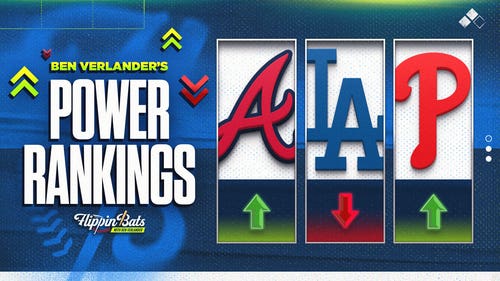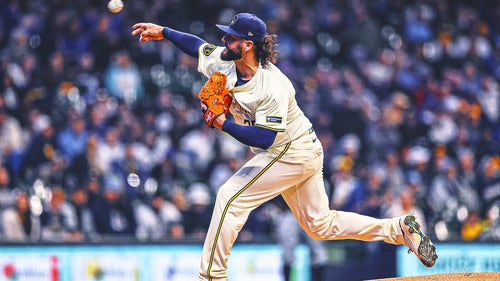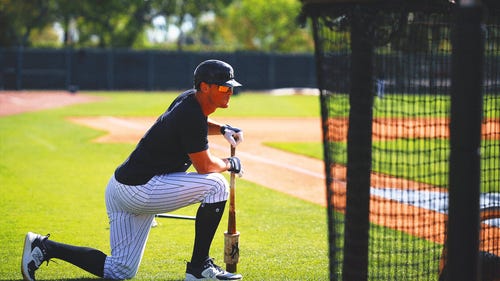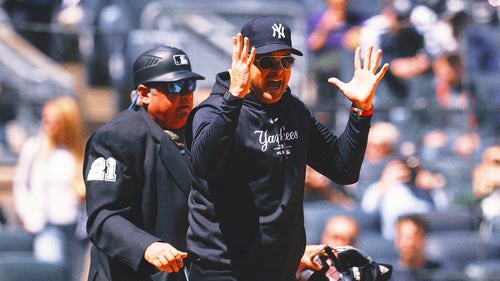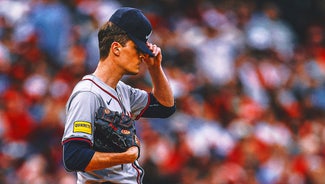
The eighth female umpire to ever work in an affiliated league debuts in June
Apr 29, 2017; Detroit, MI, USA; A view of official Rawlings Major League Baseballs prior to the game of the Chicago White Sox against the Detroit Tigers at Comerica Park. Mandatory Credit: Aaron Doster-USA TODAY Sports
Emma Charlesworth-Seiler is the latest in a line of female umpires in affiliated professional baseball that dates back to 1972.
Sometimes progress starts with a trailblazer, like Jackie Robinson, and steadily progresses over time. It's like an initial wave coming to shore, with many waves following soon after. Other times, progress moves in fits and starts, with long breaks with little movement. The history of female umpires in professional baseball has followed the second pattern over the last 45 years, but it may be gaining steam these days.
In June, 22-year-old Emma Charlesworth-Seiler will join Jen Pawol as the only female umpires in the minor leagues. Pawol umpired in the Gulf Coast League (GCL) last year and has moved up to the Short-Season Class A New York-Penn League this year. Charlesworth-Seiler is following in Pawol's footsteps by beginning her career in the GCL this summer.
Charlesworth-Seiler was discovered by the directors of umpire development for MLB and Minor League Baseball (MiLB) when she worked as a volunteer umpire at a 2015 Baseball for All tournament. Baseball for All provides opportunities for girls to play baseball. She then attended MLB's Pro Prospect Development Camp two straight years, with a summer playing baseball and umpiring in Australia sandwiched in between.
In February, Charlesworth-Seiler was the only woman out of 100 participants to complete the MiLB Umpire Training Academy. Now she's ready to begin the long trek towards the Major Leagues, which takes seven to 10 years, on average, for those who reach the highest level. Charlewsworth-Seiler acknowledged that she is just taking her first steps:
"Anyone who goes to umpire school with the intention of getting into the Minor Leagues has Major League dreams, but at this point, I'm looking at the short term. I'm excited to get the season started, learn a lot and progress and work hard, and hopefully that leads me on a path to the Major Leagues."
When Charlesworth-Seiler takes the field in June, she will be just the eighth female umpire to ever work a game in affiliated professional baseball. The following slides will take a look back at the previous seven women and the difficulties they faced while trying to succeed in the male-dominated field of professional baseball.
Bernice Gera (1972)
The first female umpire in an affiliated league was Bernice Gera, who was working as a secretary in Jackson Heights, New York, when she suddenly decided she wanted to be an umpire. She had some experience, having umped at the amateur level when not working as a secretary. She enrolled in the Florida Baseball School in 1967 as the only female in a six-week program. She reportedly did very well in her training, but was turned down for a job as an umpire in the National Association of Baseball Leagues (NABL) because she didn't meet the age, height, and weight requirements.
Gera filed a sex discrimination lawsuit that took five years to get through the courts. She finally won the suit on a 5-to-2 decision in January of 1972. In April, she was hired to work as an umpire in the New York-Penn League and became the first female umpire in an affiliated professional baseball game when she worked as a base ump in the opening game of a doubleheader on June 23.
It did not go well. She called an Auburn baserunner safe at second on a double play, then quickly reversed her call. The Auburn manager came out to argue and reportedly told her that her "first mistake was putting on an umpire's uniform and her second was blowing the call." She ejected him.
Before the second game of the doubleheader started, Gera resigned. She would later say that her resignation had nothing to do with what the Auburn manager said, but was because of her "disillusionment with baseball culture." She had received verbal, written and physical threats. The poor treatment wasn't just from players and coaches, but from her fellow umpires as well. According to her husband, she said, "I could beat them in the courts, but I can't beat them on the field." After her umpiring career ended, she was hired by the New York Mets as part of the team's community relations and promotions department, where she worked until 1979.
Christine Wren (1975-1977)
The early 1970s were difficult times for women trying to get into a male dominated field and Gera faced a harsh backlash for being the first female ump. Three years laser, Christine Wren became the second female ump. She had attended the Bill Kinnamon Specialized Umpire Training Course in Southern California and had officiated baseball, football, and basketball at different amateur levels. She caught the eye of Los Angeles Dodgers owner Peter O'Malley, who called her at the auto body shop where she worked and invited her to work an exhibition game between USC and the Dodgers at Dodger Stadium.
She jumped at the chance and did the exhibition game, then was asked to ump during spring training. Her performance in spring training landed her a gig in the Class A Northwest League, where she worked for two years. It wasn't easy. Like Gera, Wren endured sexist comments and gender bias. She also suffered a broken collarbone on a baseball that hit her as she worked behind home plate in one game.
Wren was hoping to be promoted to Double-A, but was instead moved to another Class A league, the Midwest league, by Barney Dreary, who was the administrator for the MLB Umpire Development Program. At the time, Dreary told reporters:
"For a girl, she's made of sturdy stuff. But, you see, that's what we're worried about, whether she can take the physical punishment. You never hear the men complaining, because the pain is second nature, just part of the job. And I doubt very seriously any of the players tried to set her up to get hurt. If anything, I think they were more prone to protect her."
Rather than work in the Midwest League, Wren retired from umpiring. She went on to work in other male-dominated fields, like truck driving and as a school computer technician. After leaving baseball, she didn't talk much about her career as an umpire for many years. She had been treated poorly on the field, but didn't want to admit it to people because she felt it would reflect badly on baseball, a sport she loved. In fact, she reflected on her post-umpiring life with this story:
"When I first left umpiring, I bought a house that sat above a ballpark that I could see—I bought it for that reason. They played Finger League baseball games there, high school level or older. I called a balk from my deck once. I had to run inside—they didn't know where it came from, or that I was watching. Well, it's not my fault—they blew it, I didn't."
Pam Postema (1977-1989)
Just as Christine Wren's umpiring career ended, the most famous female umpire in baseball history came upon the scene. Pam Postema umpired from 1977 to 1989. Her goal was always to make it to the major leagues. In working towards that goal, she spent years in the minor leagues, far from the bright lights and big cities. The minor league life is not easy, for players or umpires. They aren't well paid, they don't get much money each day for food, and the travel is often by train, bus or car.
Postema had other issues to deal with because of her gender, ranging from harassment to outright hostility. She pushed through it all and reached the Triple-A level in 1983, just one step below the major leagues. In 1988, she worked the annual Hall of Fame Game in Cooperstown and got good reviews from Atlanta Braves manager Chuck Tanner, who said, "I think she did an excellent job. She is a quality umpire."
An official with the New York Yankees said she called a very good strike zone, saying she was "better than some of the men we have." At the time, she was one of seven candidates to fill two vacant umpiring positions in the National League but didn't get either spot.
Unfortunately, Triple-A would be as far as she would get. After 13 years in the minor leagues and seven in Triple-A, she was let go by MLB before achieving her career-long goal. Two years after her career ended, Postema wrote a scathing memoir, You've Got to Have Balls to Make It in This League. She also filed a sex-discrimination lawsuit against MLB that would be settled out of court. Despite not making it to the Major Leagues herself, Postema has said, "There will be female umpires and players—someday. It just takes time."
Theresa Cox (1989-1991)
Near the end of Postema's career, another female umpire arrived. She was known as Theresa Cox at the time, but goes by Theresa TLC Fairlady today. In the spring of 1989, she graduated fifth in a class of 180 from Harry Wendelstedt's Florida umpiring school. Wendelestedt had been a major league umpire for many years and said Fairlady was "the best female candidate I've ever had."
Wendelstedt also claimed there wasn't a bias against female umpires, saying it was a "pipeline problem," that there just haven't been enough women in the pipeline leading to the major leagues. He also added, "I don't know why a young lady would want this job."
That sentence is like fingernails on a chalkboard to any woman who ever wanted to enter a male-dominated field. Why would a woman want to be a police officer? Why would a woman want to be in the armed forces? Why would a woman want to be an MMA fighter? It's very much a "good old boys" way of thinking and that attitude has likely been one reason so few women have umpired in professional baseball.
During her three years in organized baseball from 1989 to 1991, Fairlady faced her share of difficulties because of archaic attitudes. She was told her voice sounded too high when she called strikes early in her career. When she used a deeper voice, she was told it sounded too phony. She was criticized for the way the umpire uniform looked on her, despite the fact that numerous male MLB umps look less-than-stellar in their umpire uniforms. One of her supervisors questioned whether she was "queer." Another said women in baseball were a joke.
Like Pam Postema, at the end of her career Theresa Fairlady filed a lawsuit against baseball. Postema charged MLB with employment discrimination. Fairlady's lawsuit alleged harassment and abuse by male umpires. Both cases were settled in 1993 and Postema and Fairlady agreed not to reveal the terms of the financial settlement but said they were satisfied with the outcome.
Ria Cortesio (1999-2007)
After Fairlady, there was an eight-year gap until the next female umpire arrived. Ria Cortesio was a professional umpire from 1999 to 2007. Like the women before her, she also did her best to fit into a male-dominated field, including cutting her ponytail and lowering her voice when making calls. She was five-foot-ten, but slender. In one minor league game, the hefty Prince Fielder gently moved her out of his way so he could charge the pitcher's mound.
Early in 2007, Cortesio became the first woman in nearly 20 years to work a Major League exhibition game when she worked a spring training contest between the Chicago Cubs and Arizona Diamondbacks. She also worked a Futures Game and the Home Run Derby at the All-Star Game in Pittsburgh in 2006.
Cortesio's last five years were spent at the Double-A level. She started her final season as the top-ranked umpire in all of Class AA, which meant an opening at the Triple-A level would have gone to her. There was no opening during the season and her ranking dropped considerably when the midseason rankings came out. This led to her release at the end of the year.
In a 2007 interview with NPR, Cortesio pointed out that the NBA has had female referees since 1997. Having female referees at the highest level of professional basketball was news for a short period of time, but hasn't been an issue for many years. Violet Palmer, the first female referee in the NBA, worked as an on-court official for 18 years before retiring last year. It's surprising that MLB still hasn't had a female umpire 20 years after the NBA saw that barrier shattered.
Shanna Kook (2003-2004)
In the middle of Ria Cortesio's career, Shanna Kook was a female umpire in an affiliated professional baseball league for two years. Kook was headed for a career in music as a viola player at McGill University when she decided to be a professional baseball umpire instead. She had been umpiring since she was 14 year old after attending an umpire's clinic put on by the Ontario Baseball Association. When she decided to pursue umpiring as a profession, she headed to umpire school in Florida.
More from Call to the Pen
Because of her relative inexperience, she did not do well in her first try at umpire school. She had been umpiring for amateur leagues in Toronto and didn't have the necessary skills and experience to make the jump to a professional league just yet. She got a boost from a 30-year MLB veteran umpire, Jim McKean, who advised her to get a scholarship from MLB to fund a second session at umpire school. McKean had seen Kook umpire in the Women's World Series tournament.
The 21-year-old Kook finished in the top five of her class the second time around. Three of the other top five—Dan Bellino, Vic Carapazza and Mark Ripperberger—became MLB umpires. Her high standing led her to what is now known as the MiLB Professional Umpire Academy and her first pro job in the Pioneer League. Kook remembers umpiring behind fellow Canadian Russell Martin, who was the catcher for the Dodgers' farm team at the time, two Canadians behind the dish.
After two years in the Pioneer league that included thousands of miles put on her car as she traveled through Idaho, Montana, Utah and Wyoming, Kook left umpiring. She acknowledged the difficulty of life in the minor leagues:
"My contract had ended and life on the road was difficult. There were many challenges that I faced as a woman and an umpire and I became quite homesick after a while. It was an emotional rollercoaster."
Jen Pawol (2016-present)
After Ria Cortesio's career ended in 2007, it was nearly a decade until another female umpire appeared in an affiliated professional league. That woman was Jen Pawol, who made her debut in the Gulf Coast (Rookie) League last year. Based on her experience, there has been considerable progress in the attitudes of the men who play and manage baseball. She didn't have any stories of abuse like the women before her suffered through.
Before the season, she was expecting to be tested, saying "I know it's coming. I think I get tested wherever I am. On and off the field. Outside of baseball. Just trying to get the oil changed in my car. I'm a New Yorker. Being tested is a way of life, so you have to earn that person's respect." By the end of the season, she acknowledged that it didn't turn out like she feared. She didn't feel that any player or coach gave her a hard time because she's a woman. In fact, she had some very poignant moments with some of the coaches and managers:
"There were quite a few coaches or managers who would say on the side to me that they had a daughter who was working in a man's world also and tell me to just keep working hard. Happened quite a few times and I never knew when they were coming. I never expected that. But I thought it was pretty cool. I really appreciated them saying that."
Pawol had a good first season. The director of Umpire Development for MiLB, Dusty Dellinger, acknowledged that she has plenty of work to do but is well on her way. She didn't have any issues on the field and no complaints from players or coaches. Manager Roly de Armas of the GCL Phillies said she was just another part of the umpire staff who worked hard and did her job. It was easy to forget she was a woman.
The New York-Penn League starts in July and Pawol will be at that level in 2017, a step ahead of Emma Charlesworth-Seiler. Based on the average length of time it takes for an umpire to make it to the Major Leagues, we could see one or both of them in a big league stadium by 2024 or so.






































































































































